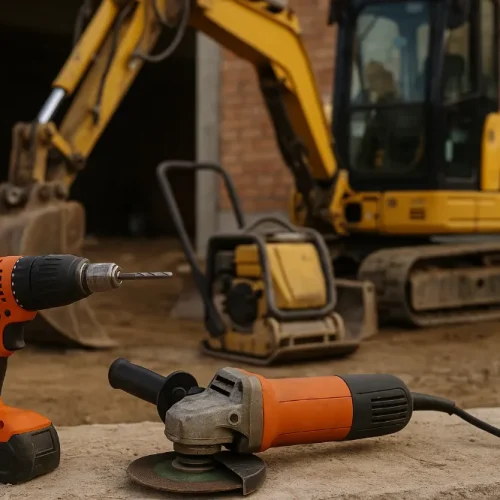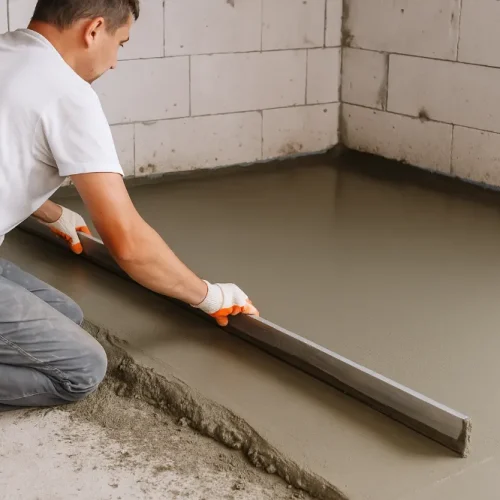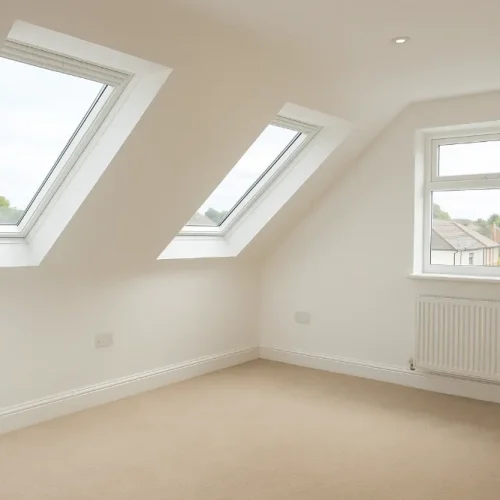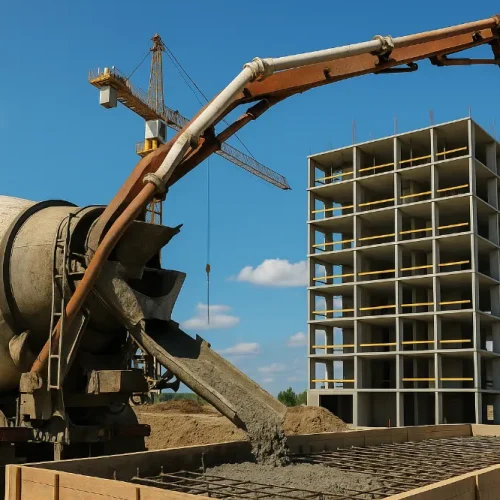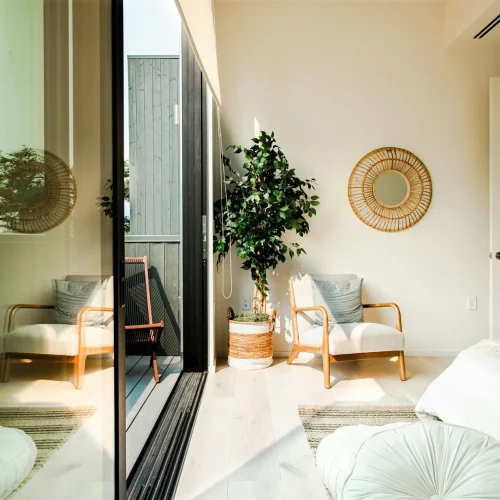
Most homes deal with hard water in some form, which means minerals like calcium and magnesium are tagging along every time you run the tap. Over time, those minerals don’t just leave a few water spots — they quietly wear down the surfaces that make your home look polished.
What starts as a faint film on a shower door can turn into cloudy glass, dull tiles, or cabinets that start to warp around the edges. Add a slow leak or bad drainage, and those small problems spread fast. It’s easy to think plumbing lives behind the walls, but the truth is, it shapes how your home looks and ages just as much as any design choice.
When Water Turns Against Design
Hard water doesn’t look like much — until it does. Those tiny mineral traces in everyday tap water start clinging to surfaces the moment they dry. Over time, calcium and magnesium build up on tiles, faucets, and glass, leaving behind that chalky haze that never quite wipes clean. At first, it’s cosmetic. Then it becomes corrosive. Fixtures lose their shine, sealants weaken, and what once gleamed starts to look permanently tired.
Leaks and drainage problems take the damage even further. A slow drip beneath the sink might seem harmless, but the moisture it leaves behind can warp wood, peel veneer, and loosen adhesives. In bathrooms, poor drainage can let moisture sit where it shouldn’t, leading to stains, swelling, and those mysterious white crusts creeping across grout lines. Homeowners who’ve watched buildup spread often call in the Liberty Plumbing team to diagnose the cause — because cleaning alone won’t fix water that’s working against your home.
Even the most beautiful finishes can’t compete with neglected plumbing. When minerals, leaks, and bad drainage work together, design loses every time. What looks like surface wear is often a deeper problem quietly starting behind the walls.
Common Decorative Surfaces at Risk
Every material in your home reacts differently to water, but few can escape it entirely. Hard water, leaks, and moisture all leave their marks — sometimes slowly, sometimes overnight. Once damage starts, it tends to spread, especially in warm or humid areas.
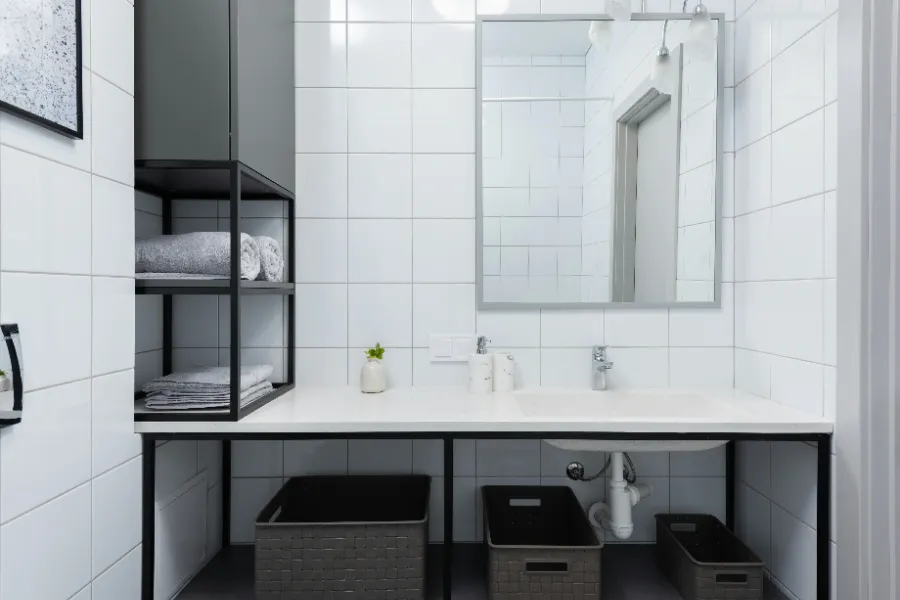
Tile and Grout
Tile looks invincible, but its weak point is grout. Minerals settle in the porous lines, turning bright white seams gray or yellow. Over time, trapped moisture feeds mold beneath the surface, leaving tiles looking dull even after a deep scrub.
Cabinetry and Trim
Wood and water never get along. A tiny leak behind the dishwasher or under the sink can make cabinet panels swell or edges curl. Once the finish lifts, moisture seeps in deeper, staining the wood and softening adhesives.
Fixtures and Metal Accents
Chrome, brass, and stainless steel can all lose their shine when minerals cling to them. That thin crust of white or green residue doesn’t just look bad — it slowly corrodes the metal underneath.
Painted or Papered Walls
Pipes that run behind walls sometimes sweat or leak just enough to bubble paint or lift wallpaper seams. The first hint is often a soft spot or faint discoloration that grows darker with time.
When these signs appear, they’re not just surface blemishes. They’re quiet reminders that design depends on the health of the plumbing hidden beneath it.
How to Spot Trouble Early
Most water-related surface damage doesn’t happen overnight — it creeps in. The trick is noticing the small signs before they grow into repairs that cost thousands. Some clues are easy to miss at first glance but tell you a lot about what’s happening behind the walls or under the sink.
White crust or faint green buildup around taps and showerheads usually means minerals are settling in. Cloudy glass, dull tiles, or water spots that keep coming back even after cleaning hint at hard water. A musty smell or a soft patch on drywall can signal a hidden leak that’s feeding mold. And if your water pressure drops suddenly or drains start to gurgle, there’s a good chance sediment is building up inside the pipes.
Catching these details early saves both the look of your home and the plumbing itself. A few minutes of attention during your regular cleaning routine can keep small problems from quietly ruining beautiful finishes.
Prevention: Where Décor Care Meets Plumbing Maintenance
Keeping your home beautiful isn’t just about choosing the right finishes — it’s about protecting them from what’s flowing behind the walls. A few steady habits can stop water from dulling, warping, or corroding the things you’ve invested in.
Water Treatment
Installing a softener or descaler helps reduce the calcium and magnesium that cause cloudy glass and crusty buildup. It’s one of the simplest ways to extend the life of fixtures and keep tiles shining longer between cleanings.
Regular Inspections
A quick check under sinks, around appliances, and behind toilets once a month can reveal leaks before they spread. Look for damp wood, peeling laminate, or darkened grout — small clues that moisture is sneaking in.
Proper Drainage
Bathrooms and kitchens take the brunt of water exposure. Make sure shower floors slope correctly and that seals around sinks or backsplashes stay tight. Even a thin line of cracked caulk can let water slip into cabinetry or walls.
Protective Cleaning
Harsh cleaners can strip finishes, leaving surfaces more vulnerable to water stains. Switch to pH-neutral products or gentle vinegar solutions, and rinse surfaces thoroughly to avoid residue buildup.
Maintenance Schedule
Flushing your water heater once or twice a year clears sediment that could clog lines or stain fixtures. Replacing old washers or corroded connections keeps leaks from starting in the first place.
Small, consistent care connects the dots between plumbing and design. It’s not glamorous, but it’s the reason some homes stay crisp and spotless while others start showing their age long before they should.
When Professional Help Makes Sense
Sometimes the signs of damage are easy to miss until it’s too late. A bit of mineral buildup or a small leak might seem like an afternoon chore, but if it keeps coming back, there’s probably a bigger problem at play. That’s when it helps to call in a professional who can look past the surface.
Experienced plumbers can test your water hardness, spot pressure inconsistencies, and track down hidden leaks without tearing through walls. They also know how to balance repairs with prevention — replacing corroded fittings, adjusting flow rates, or installing softeners that protect both pipes and finishes. Surface specialists can then step in to restore the look of tiles, cabinetry, or fixtures once the plumbing issues are handled.
A little expert guidance early on can stop a chain reaction of damage later. What seems like a cleaning problem often turns out to be a plumbing one — and fixing it properly keeps your home looking cared for, not constantly patched.
Restoring Beauty Through Better Plumbing
When your home’s surfaces start showing wear, it’s easy to blame cleaning habits or old materials. But most of the time, the real culprit is water that’s been misbehaving behind the scenes. Hard water leaves its mark quietly, and leaks don’t always announce themselves with a puddle. Together, they slowly fade the beauty of everything you’ve built.
Protecting your home’s look isn’t about spending more on décor — it’s about treating plumbing and design as one system. Clear water lines, sealed drains, and balanced flow all preserve the materials that make your home feel fresh and well cared for. Once you start thinking of maintenance as part of design, it’s easier to keep both working in harmony.
In the end, good plumbing doesn’t just save water or money. It keeps your home’s style intact, year after year, turning upkeep into quiet preservation.
FAQs
Hard water contains minerals like calcium and magnesium that can leave chalky deposits on tiles, glass, and fixtures, dulling their shine over time.
Yes. Over time, mineral buildup from hard water can corrode metal, cloud glass, stain tile grout, and even weaken surface sealants.
Leaky pipes, poor drainage, or condensation behind walls can cause swelling in wood, bubbling paint, and mold growth beneath decorative finishes.
Surfaces like tile grout, cabinetry, metal fixtures, and painted walls are especially vulnerable to water-related damage.
Cloudy glassware, mineral spots on faucets, and soap that doesn’t lather easily are common signs of hard water buildup.
Installing a water softener, checking for leaks monthly, cleaning with pH-neutral solutions, and maintaining proper drainage can help protect surfaces.
A monthly visual inspection under sinks, around appliances, and near toilets helps detect small leaks before they cause serious surface damage.
Mild vinegar solutions or pH-neutral cleaners can remove light residue, but recurring buildup usually indicates a deeper plumbing or water quality issue.
If you notice recurring stains, reduced water pressure, or moisture behind walls, it’s best to call a licensed plumber for a full inspection.
Proper plumbing preserves the appearance and longevity of materials — ensuring that cabinetry, tiles, and fixtures remain clean, bright, and damage-free.


